Soft power
In China, the story of private museums is only just beginning. Art collections on display to the public, spearheading a new kind of soft power, are encouraged by the government. These institutions are flourishing across the country and are particularly linked with the “New Silk Road” state policy. The Western eye might notice, however, that this idea of a museum institution is not quite the same as the kind that appears in the United States or in Europe.
Tank museum, Sifang museum
No doubt, of course, that there are private museums driven by the ambition for scientific excellence in the field, such as UCCA in Beijing directed by Philip Tinari (See here an interview of Philip Tinari during the Covid period), which, for example, is exhibiting until 15 October the collection of Matisse works from the Matisse Museum in Le Cateau-Cambrésis (France). We also find in China unquestionably ultra-passionate art lovers such as Qiao Zhibing, who set up the Tank Museum in Shanghai (which is currently exhibiting the British artist who lives in California, Thomas Houseago) or Lu Xun who is behind the Sifang Museum in Nanjing (Nankin, 300km from Shanghai) (See here a report about the West Bund Centre Pompidou).
Art as investment
However, in the ultra-contemporary art sector, while Chinese buyers now represent a significant segment of the clientele, it is common for artworks to be considered as having investment or speculative value. The title of museum or foundation allows their directors to access at galleries artworks that are highly prized, which are the source of major profits when they are resold. As for museum spaces, it is common in China to make them profitable by leasing them to galleries, which then exhibit their artists there.
Long Museum
The most high-profile museum in China today is without doubt the Long Museum, whose main space, spanning 33,000m2, is located in Shanghai in the West Bund district. The couple who own the institution embody the new Chinese dream.
A former taxi driver
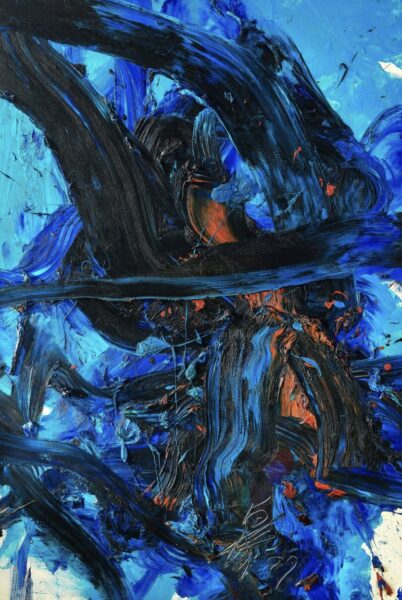
Shiraga
Liu Yiqian, a former taxi driver, made a colossal fortune in insurance and real estate. He first amassed a mega-collection of traditional Chinese art, the most famous piece being a small imperial bowl from the peak of the Ming dynasty, dating from the 15th century and bought at auction for 26 million euros in 2014. He was filmed drinking from the ultra-precious receptacle, which brought him instant popularity.
Wang Wei
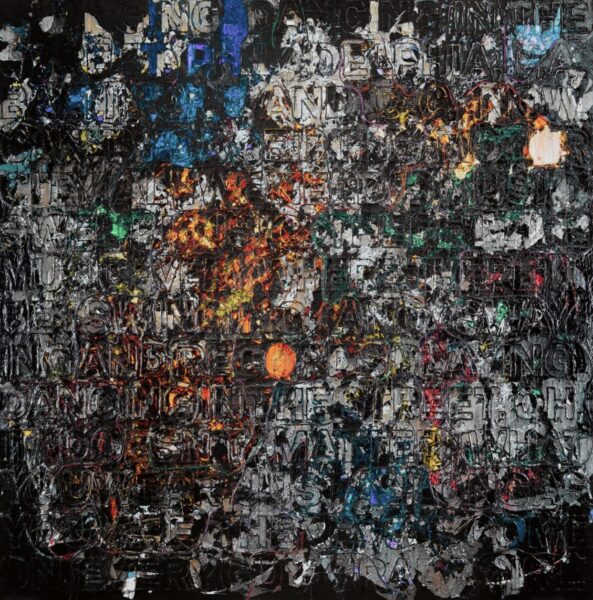
Mark Bradford
At a later stage his wife Wang Wei became more interested in Western modern and contemporary art. In this vein there is a painting by Modigliani, a voluptuous “Nu couché” acquired at auction in 2015 for 158.7 million euros, an auction record for the artist, which launched the couple on the international playing field among the biggest clients in art.
Strangest rumours
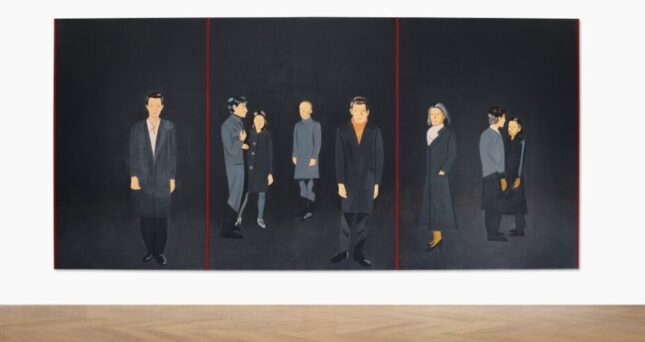
Alex Katz
But then, towards the end of August the strangest rumours started circulating surrounding the sale of part of the Long Museum’s collection. Or to put it another way, how the couple who spared no expense were starting to look like they needed money. The impact of this sale on Chinese morale in the art market will be very significant.
Difficult context
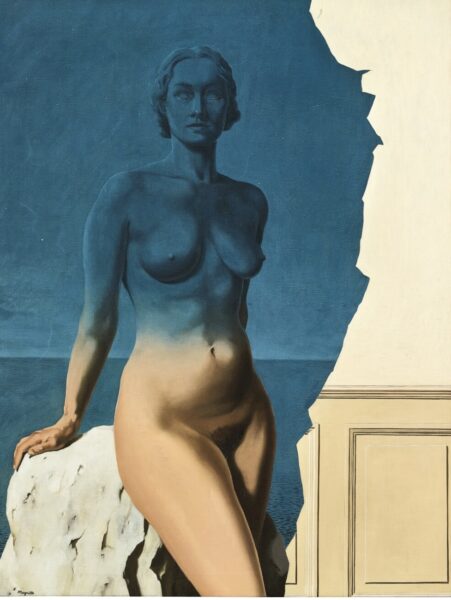
René Magritte
“It’s come as a surprise. They were always very active in buying art,” comments a connoisseur of the Chinese scene. It must be said that the general context in the country since Covid has been particularly difficult and the mood is gloomy. According to local observers, the Chinese are spending less, foreigners are not as present, real estate is falling and censorship is noticeably stronger. (See here a report about the market for Magritte)
Last March, however, Chinese social media announced that Wang Wei had bought no less than 30 artworks during the course of the Art Basel Hong Kong fair.
5 October 2023 in Hong Kong
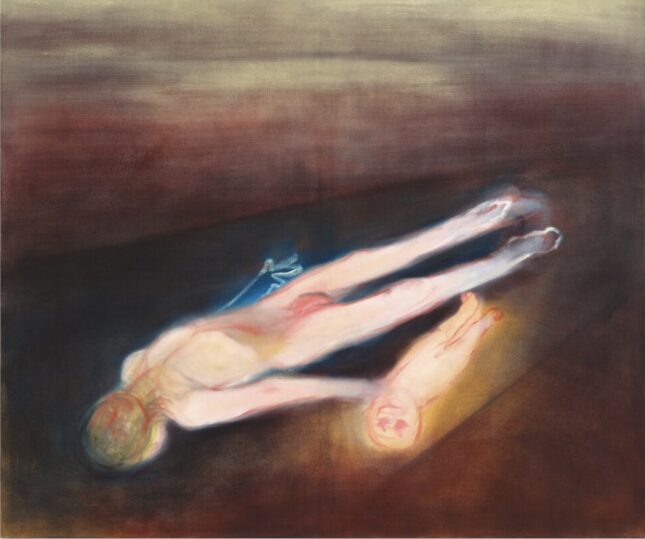
Miriam Cahn
On 5 October 2023, Sotheby’s Hong Kong is presenting 40 lots of modern and contemporary art that have come from the couple’s collection. Estimate: 95 million dollars. In October in London and in November in New York there will also be contemporary artworks from the same origin, which the auction house will not yet reveal. “It’s a very small selection from their collection,” insists Alex Branczik, Sotheby’s head of modern and contemporary art in Asia. “This in no way signals a drop in activity for the Asian market. We have just opened new premises in Asia.” He gives an example. “In June 2023 the Klimt painting, ‘Lady with a Fan’, sold for 85.3 million pounds, and it was bought by someone from Hong Kong and the underbidder was from mainland China.”
(Neither Wang Wei or Alex Branczik who were interviewed over Zoom wanted the video interview to be made public.)
Exclusive interview

Yayoi Kusama
In an exclusive interview with me, Wang Wei, who spoke with passion about the program of the museum declared with regards to the sale: “It represents a tiny part of our collections. For all the artworks sold we already have several other pieces by the same artist. We have new major plans for the Long Museum and the product will go towards new acquisitions, among other things.”
10 year anniversary
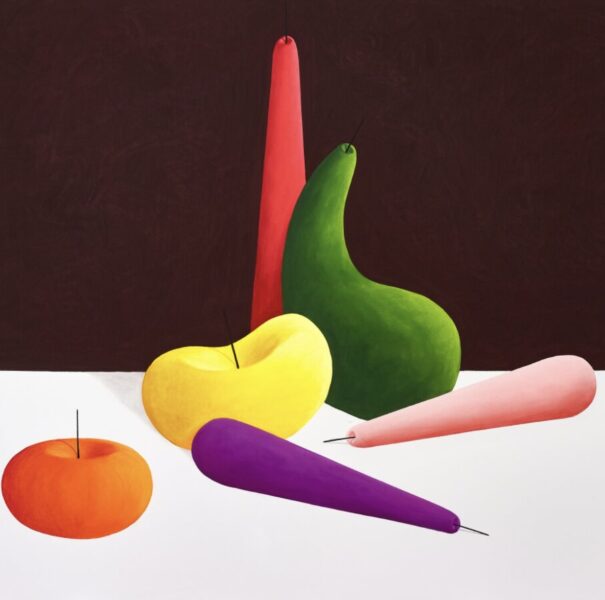
Nicolas Party
The Long Museum is currently celebrating its 10 year anniversary through no less than 10 exhibitions, the next of which, in November, is dedicated to the portrait and will be curated by the British Iwona Blazwick. It will be followed by an exhibition on flowers throughout Chinese and Western art history, which will be curated by Wang Wei herself. “Since the beginning I’ve been learning everything through collecting,” she explains.
Modigliani
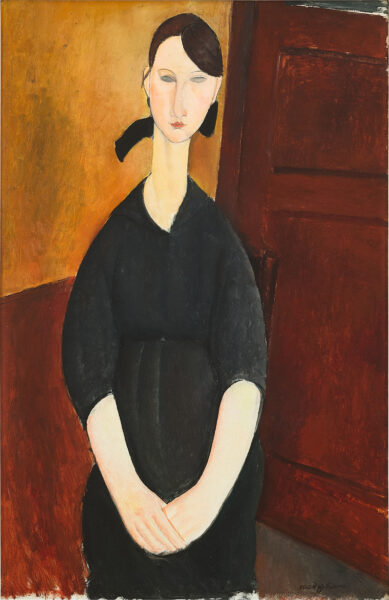
Amedeo Modigliani
The most highly anticipated piece at auction in Hong Kong, with an estimate of 45 million dollars, is the “Portrait de Paulette Jourdain” painted around 1919 by Amedeo Modigliani, bought by the couple at auction in 2015 for 38.9 million dollars. This painting belonged for a long time to the former owner of Sotheby’s, Alfred Taubman.
Léonard Foujita
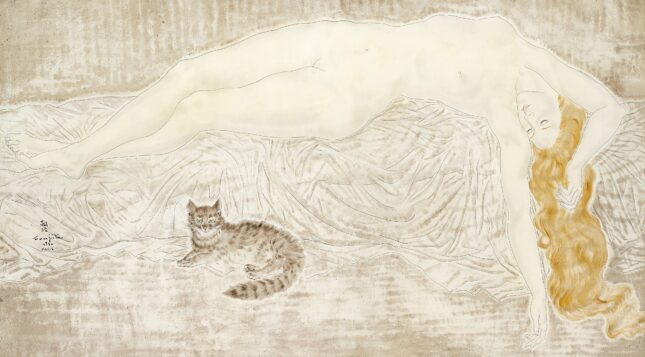
Léonard Foujita
One of the nice surprises of the catalogue is a canvas by Léonard Foujita (1886-1968). The modern artist of Japanese origin remains underestimated. In the 1930s he painted remarkable nudes in white on white, marked by black lines for the folds in fabrics and curves of the body. In 2014 the couple acquired it at auction for 1.4 million euros. The work is now estimated by Sotheby’s to be worth 4.7 million euros. (See here a report about Foujita)
Zao Wou Ki
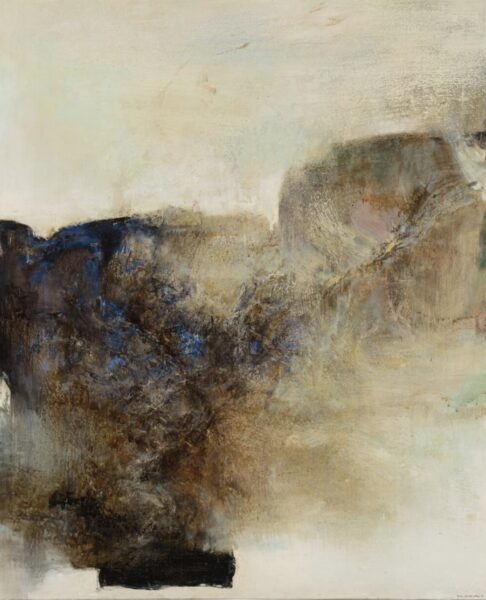
Zao Wou Ki
They have collected from all over the place, according to Wang Wei, in order to “promote cultural dialogue between different generations but also artists and geographical areas.”
One of the stars of the Chinese contemporary market is the Chinese painter who was based in France from 1949 onwards, Zao Wou Ki (1921-2013). At auction the record for the artist, obtained for a monumental painting, went up to 56.1 million euros. Sotheby’s is presenting a very hazy canvas from 1978 in shades of brown and blue (estimate: 3.8 million euros). It was acquired in 2010 by the owners of the Long Museum for 1.4 million euros. But since then it has considerably increased in value owing to the effect of demand from mainland China and Taiwan. (See here a report about Zao Wou Ki)
Harold Ancart
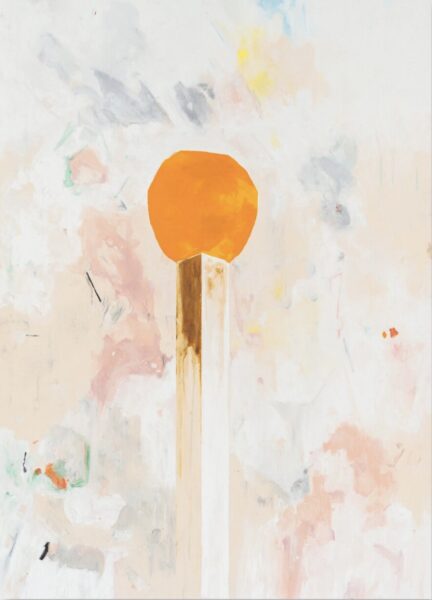
Harold Ancart
Wang Wei is also interested in young Western talents, such as the Belgian painter based in New York, Harold Ancart (born in 1980). His figurative compositions have a strong visual impact, depicting various subjects. In this case, the large canvas presented depicts a simple matchstick portrayed like a monument (estimate: 170,000 euros). Ancart is one of the painters to have been noticed by the market in recent years. Having been represented by the Zwirner gallery, he is now on the roster of another art multinational, Gagosian. In October 2022 a different version of the “portrait of a matchstick” sold for 438,000 euros.
Amid a context of international uncertainty and while the Art Basel fair in June 2023 recorded a drop in prices of around 20%( See here the report about Art Basel), the sale on 5 October is a much-anticipated meeting to mark the status of the art market in Asia.
https://www.sothebys.com/en/buy/auction/2023/a-long-journey?lotFilter=AllLots
Support independent news on art.
Your contribution : Make a monthly commitment to support JB Reports or a one off contribution as and when you feel like it. Choose the option that suits you best.
Need to cancel a recurring donation? Please go here.
The donation is considered to be a subscription for a fee set by the donor and for a duration also set by the donor.





